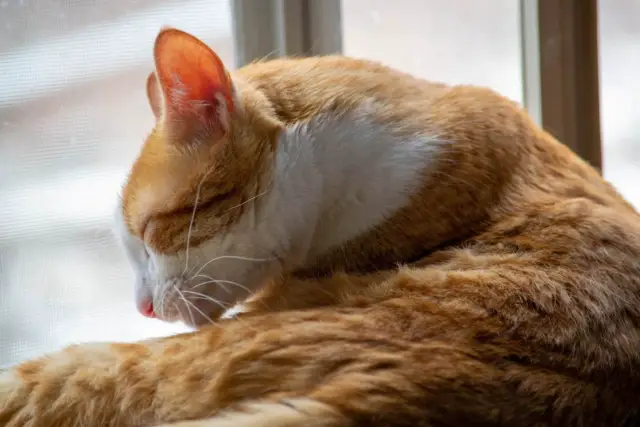
Caring for a cat involves more than just providing food and a cozy place to nap. As responsible cat owners, it is essential to understand the various aspects of cat care, including grooming. While cats are known for their self-grooming abilities, there may be times when they need a little extra help, particularly when it comes to bathing. In this article, we will delve into the mystery of how often to bathe your feline friend and provide you with valuable insights to ensure your cat stays clean and healthy.
Understanding the Importance of Bathing for Cats
Bathing is an essential part of maintaining a cat’s overall hygiene. It helps remove dirt, debris, and excess oils from their fur, preventing matting and skin irritations. Additionally, bathing can also help reduce the presence of allergens, such as dander, which can be beneficial for individuals with allergies. Regular bathing promotes a shiny and healthy coat, while also preventing the buildup of unpleasant odors. However, it is important to note that excessive bathing can strip away the natural oils from a cat’s skin, leading to dryness and potential skin problems. Therefore, finding the right balance is crucial.
Factors to Consider When Determining Bathing Frequency
Determining how often to bathe your cat depends on various factors, including their breed, lifestyle, and overall health. Some cats are more prone to getting dirty or have specific coat types that require more frequent bathing. For example, long-haired cats are more likely to develop mats and tangles, necessitating regular baths. Similarly, outdoor cats tend to encounter dirt and other contaminants more frequently, requiring more frequent bathing. On the other hand, cats with certain health conditions may require more or less bathing, as advised by a veterinarian. It’s important to consider these factors when determining the appropriate bathing frequency for your cat.
Signs That Your Cat Needs a Bath
While cats are known for their meticulous grooming habits, there are certain signs that indicate they may need a bath. If you notice a strong and persistent odor coming from your cat’s coat, it may be time for a bath. Additionally, if your cat has gotten into something sticky or dirty, such as oil or mud, a bath may be necessary to remove the substance from their fur. Cats with skin conditions, such as allergies or flea infestations, may also benefit from regular bathing to alleviate discomfort and promote healing. Observing your cat’s behavior and paying attention to any changes in their coat or skin can help you determine when it’s time for a bath.
How Often Should You Bathe Your Cat?
The frequency of bathing your cat depends on their individual needs and circumstances. In general, most cats do not require frequent baths, as they are capable of keeping themselves clean. However, there are situations where bathing is necessary. For cats with no specific health or grooming issues, a bath every 4-6 weeks is typically sufficient to maintain their cleanliness. Long-haired cats may benefit from more frequent baths, around once every 2-3 weeks, to prevent matting and tangles. Cats with certain medical conditions may require more frequent bathing, as recommended by a veterinarian. It is important to consult with a professional to determine the ideal bathing frequency for your cat.
Tips for Bathing Your Cat
Bathing a cat can be a challenging task, as many felines are not fond of water. However, with the right approach and some patience, it can become a manageable and stress-free experience. Here are some tips to make bathing your cat a smoother process:
- Prepare the bathing area in advance, ensuring everything you need is within reach.
- Use a cat-friendly shampoo specifically formulated for feline use to avoid skin irritations.
- Gradually introduce your cat to water by starting with a shallow warm bath and using a gentle, reassuring tone.
- Use a washcloth or a soft sponge to wet and lather your cat’s fur, avoiding the face and ears.
- Rinse thoroughly, making sure to remove all shampoo residue from your cat’s coat.
- Dry your cat gently with a towel, and if they tolerate it, use a hairdryer on a low, warm setting.
Alternatives to Traditional Bathing Methods
If your cat absolutely detests water and bathing becomes an impossible task, there are alternative methods to keep them clean. Dry shampoos designed for cats can be a convenient solution. These powders or foams can be applied to your cat’s fur and then brushed out, helping to remove dirt and odors without the need for water. Regular brushing is also an effective way to keep your cat’s coat clean and free from tangles. Additionally, some cats may enjoy being wiped down with cat-friendly grooming wipes, which can be especially useful for spot cleaning or freshening up between baths. Exploring these alternatives can help maintain your cat’s hygiene without causing unnecessary stress.
Common Mistakes to Avoid When Bathing Your Cat
When it comes to bathing your cat, it is important to avoid common mistakes that can lead to stress or discomfort for your feline friend. Some common mistakes include:
- Using human shampoos or cleaning products that may contain ingredients harmful to cats.
- Neglecting to secure your cat properly during the bath, which can lead to escape attempts and accidents.
- Forcing your cat into the water or rushing the process, which can create fear and anxiety.
- Using high-pressure water or harsh water temperature, which can cause discomfort and potential injury.
- Neglecting to dry your cat properly after the bath, which can lead to chill and skin issues.
By avoiding these mistakes and taking a gentle and patient approach, you can make bathing a more positive experience for both you and your cat.
Products and Tools for Cat Bathing
To ensure a successful bathing experience, it is essential to have the right products and tools on hand. Here are some items you may need:
- Cat-friendly shampoo: Look for mild, hypoallergenic shampoos specifically formulated for cats.
- Towels: Have several soft towels ready to dry your cat after the bath.
- Brush or comb: Use a brush or comb suitable for your cat’s coat type to remove any tangles or mats before and after bathing.
- Grooming wipes: These wipes can be useful for quick cleanups or freshening up between baths.
- Rubber mat or towel: Place a rubber mat or towel at the bottom of the bathing area to provide your cat with better traction and prevent slipping.
Having these essential items readily available will make the bathing process more efficient and comfortable for both you and your cat.
Finding the Right Bathing Routine for Your Cat
Decoding the mystery of how often to bathe your feline friend can be a challenging task, but with the information provided in this article, you are now equipped with the knowledge to make informed decisions about your cat’s bathing routine. Remember to consider your cat’s breed, lifestyle, and overall health when determining the frequency of baths. Take note of any signs indicating your cat needs a bath and follow the tips and alternatives provided to ensure a positive bathing experience. By finding the right balance and using the appropriate products and tools, you can keep your cat clean, healthy, and happy.
If you enjoyed my article, I would appreciate you sharing it with your network.

Sima Ndlebe
Sima writes for CatBuzz. He is interested in Cats, Health and Fitness, and Entrepreneurship.
Published: 6 December 2023
Related Articles
Disclaimer
The content found on CatBuzz.org is presented on an "as is" basis and is intended for general consumer information and education purposes only. Any utilization of this information is voluntary and solely at the user's own risk.
None of the articles or content should be regarded as, or used in place of, veterinary medical advice, diagnosis, or treatment. The information provided on the website is purely for educational and informational intentions and should not be considered a substitute for professional guidance from a veterinarian or other qualified expert. The articles are designed to inform consumers about veterinary healthcare and medical matters that may impact their cat's daily life. It should be noted that this website and its services do not constitute the practice of any form of veterinary medical advice, diagnosis, or treatment. CatBuzz.org explicitly disclaims any liability for any direct or indirect damages or losses that may arise from the use of or reliance on the information contained within the content.
Consumers must consult a veterinarian, veterinary specialist, or another qualified veterinary healthcare provider when seeking advice regarding their cat's health or medical conditions. It is important not to ignore, avoid, or postpone seeking medical advice from a veterinarian or other qualified veterinary healthcare provider solely based on information obtained from this website. If you believe that your cat may be experiencing a medical issue or condition, it is imperative to promptly contact a qualified veterinary healthcare professional.



